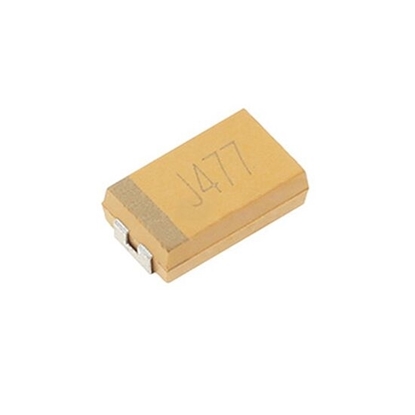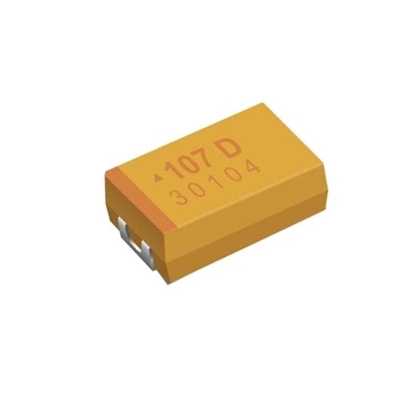- Home
-
Motors
-
Motor Controls
- Power Supplies
-
Passive Components
- Back
- Relays
- Contactors
- Circuit Breakers
- Capacitors
- Connectors
- Filters
- Push Button
- Pressure Switch
-
Potentiometer
- Back
- Rotary Potentiometer
-
Resistor
- Back
- Metal Film Resistor
- Transfer Switches
- Current Transformer
- DIP Switch
- Electronic Ballast
- Foot Switch
- Forward Reverse Switch
- Float Valves
- Fuse
- Hook-Up Wire
- Isolator Switch
- Indicator Light
- Junction Box
- Joystick Switch
- Knife Switch
- Locking Plugs
- LED Machine Light
- Low Noise Amplifiers
- Laser Module
- Micro Switch
- Magnetic Starter
- Over Voltage Protector
- PV Combiner Box
- Potential Transformer
- Rotary Switch
- Rocker Switch
- RF Attenuators
- Rectifier
- Surge Protection Devices
- Terminal Block
- Toggle Switch
- Tact Switch
- Timer Switch
-
Sensors
- Back
- Encoder
- Proximity Sensor
- Temperature Sensor
- Level Sensor
- Accelerometer Sensor
- Angle Sensor
- Current Sensor
- Compass Sensor
- Displacement Sensor
- Flow Switch
- Float Switch
- Gyroscope Sensor
- Gas Sensor
- Inclinometer Sensor
- Ion Selective Electrode
- Load Cell
- Limit Switch
- Laser Sensor
- Light Curtain
- Magnetic Cylinder Sensor
- Noise Sensor
- pH Electrode
- Pressure Sensor
- PM Sensor
- Photoelectric Sensor
- Radiation Sensor
- Reference Electrode
- Rain Sensor
- Signal Isolator
- Safety Switch
- Strain Gauge
- Speed Sensor
- Soil Moisture Sensor
- Temperature and Humidity Sensor
- Torque Sensor
- Ultrasonic Sensor
- Voltage Sensor
- Vibration Transmitters
- Water Leakage Sensor
- Water Quality Sensor
-
Test & Measurement
- Back
- Gas Detectors
- Micrometers
- Oscilloscopes
- Pressure Gauge
- Protractor
- Thickness Gauge
- Turbidity Meter
- Anemometer
- Air Quality Monitor
- Clamp Meter
- Crane Scale
- Colorimeter
- Current Transformer Tester
- Conductivity Meter
- Digital Panel Meter
- Digital Counter
- Digital Readout
- Dew Point Meter
- Digital Inclinometer
- Digital Torque Adapters
- Density Meter
- Distance Meter
- Dynamometer
- Digital Tachometer
- Digital Indicator
- Dielectric Oil Tester
- Digital Manometer
- Diameter Gauge
- Energy Meter
- Earth Resistance Tester
- Electronic Analytical Balance
- Electronic Load
- Electronic Compass
- Flow Meters
- Function Generator
- Force Gauge
- Feeler Gauges
- Gloss Meter
- Gauss Meter
- Hipot Tester
- Hardness Tester
- Height Gauges
- Handheld Ultrasonic Homogenizer
- Infrared Thermometers
- Insulation Tester
- Linear Scale
- LCR Meter
- Laser Levels
- Lux Meter
- Land Meter
- Moisture Meter
- Multimeter
- Metal Detector
- Measuring Wheel
- Measuring Tapes
- Nuclear Radiation Detector
- Network Cable Tester
- Optical Time Domain Reflectometer
- Oil Tank Gauge Tape
- pH Meter
- Paperless Recorder
- Particle Counter
- Power Meter
- Power Meter Plug
- Pipe Blockage Detector
- Particle Size Analyzer
- Relay Tester
- Refractometer
- Rebound Hammer
- Rebar Scanner
- Spectrophotometers
- Sound Level Meter
- Smoke Detector
- Solar Power Meter
- Surface Roughness Tester
- Signal Generator
- Stud Finder
- Temperature Controller
- Temperature Data Logger
- Tension Meters
- USB Tester
- Viscometer
- Vibration Meter
- Vernier Caliper
- Volt Amp Meter
- Water Quality Tester
- Water Leakage Detectors
-
Transmission & Actuator
- Back
- Brakes and Clutches
- Ball Valves
- Butterfly Valves
- Bearings
- Check Valves
- Control Valves
- Gearbox
- Globe Valves
- Gate Valves
- Hydraulic Cylinders
- Needle Valves
- Pressure Regulator
- Pressure Relief Valves
- Solenoid Valves
- Shaft Coupling
- Strainers
- Valve Actuators
- Air Filters
- Air Hose Fittings
- Angle Seat Valves
- Door Opener
- Drag Chain
- Diaphragm Valves
- FRL Unit
- Filling Valve
- Hydraulic Actuator
- Hand Valves
- Hydraulic Accumulators
- Linear Actuators
- Linear Slide
- Linear Rail
- Pneumatic Cylinders
- Pneumatic Foot Pedal
- Plug Valves
- Pinch Valves
- Plunger Valves
- Pulse Valves
- Quick Connector
- Quick Exhaust Valves
- Slip Ring
- Steam Traps
- Shuttle Valves
- Torque Limiters
- Universal Couplings
- Vacuum Generator
-
Pumps
- Back
- Booster Pump
- Centrifugal Pump
- Diaphragm Pump
- Hydraulic Pump
- Lubrication Pump
- Vacuum Pump
- Well Pump
- Aerator Pump
- Bilge Pump
- Dosing Pump
- Fire Pump
- Gear Pump
- Hot Oil Pump
- Lobe Pump
- Magnetic Drive Pump
- Mud Pump
- Peristaltic Pump
- Piston Pump
- Pool Pump
- Rotary Hand Pump
- Screw Pump
- Self Priming Pump
- Sewage Pump
- Sliding Vane Pump
- Wing Pump
-
Tools
- Back
- Blower
- Centrifuge Machine
- Circular Saws
- Desoldering Tool
- Generator
- Glass Lined Reactor
- Hoist
- Jack
- Plate Clamp
- Rebar Tool
- Soldering Tool
- Winch
- Alarm & Siren
- Beam Trolley
- Beam Clamp
- Cable Cutter
- Crimping Tool
- DC Cooling Fan
- Endoscope
- Electric Pressure Washer
- Foam Cutter
- Flange Spreader
- Flashlight
- Heat Exchanger
- Hydraulic Punch
- Heat Gun
- Hydraulic Puller
- Hydrothermal Synthesis Reactor
- Impact Wrenches
- Inkjet Printer
- Lifting Hook
- Labour Protection Appliance
- Magnetic Stirrer
- Magnetic Sweepers
- Portable LED Work Light
- Pipettes
- Pneumatic Screw Driver
- Pneumatic Drill
- Pipe Bender
- Rubber Sheets
- Reciprocating Saw
- Rotary Evaporator
- Sander
- Screw Feeder
- Snatch Block
- Spring Balancer
- Strapping Tool
- Wire Stripper
-
Communication & Controller
-
Industrial Equipment
- Back
- Air Compressors
- Chamfering Machines
- CNC Router Machine
- Dryer
- Dehumidifier
- Fume Extractor
- Fan Heater
- Industrial Cameras
- Industrial Vacuum Cleaner
-
Laser Machines
- Back
- Laser Marker
- Oil Mist Eliminators
- SCARA Robot
- Static Eliminator
- Steam Autoclave Sterilizer
- Tool Setter
- Ultrasonic Cleaner
- Water Chiller
- Welding Machine
- Water Purification System
- Technical Support
- How To Buy
- Contact
- Chat
- ATO /
- Passive Components /
- Capacitors /
- Tantalum Capacitor
Tantalum Capacitor
470μF 6.3V SMD Tantalum Capacitor
1000μF 6.3V SMD Tantalum Capacitor
A tantalum capacitor is an electrolytic capacitor, a passive component of electronic circuits. The solid tantalum capacitor distinguishes itself from other conventional and electrolytic capacitors in having high capacitance per volume (high volumetric efficiency) and lower weight. Tantalum electrolytic capacitor has wide operating temperature range, stable temperature characteristics and large specific capacity, which can meet the long term working stability.
ATO store provides various models tantalum capacitor, mainly about SMD tantalum capacitor and DIP tantalum capacitor. Hot selling especially 1μF tantalum capacitor, 100μF tantalum capacitor, 470μF tantalum capacitor, 10μF tantalum capacitor and 22μF tantalum capacitor. Tantalum chip capacitor widely used in industries like telecom, avionics, space, medical, consumer applications.
Ceramic vs. Tantalum Capacitor:
 Although both tantalum and ceramic capacitors are similar in their function, they have some differences in their techniques, materials, and performance. Ceramic and tantalum capacitors differ in certain ways:
Although both tantalum and ceramic capacitors are similar in their function, they have some differences in their techniques, materials, and performance. Ceramic and tantalum capacitors differ in certain ways:
- Aging. Ceramic capacitors tend to age faster than tantalum capacitors. Tantalum capacitors do not have a known wear-out mechanism.
- Polarization. tantalum capacitors are polarized, which means that they can only be connected to a DC supply and maintain the right terminal polarity. In contrast, ceramic capacitors are non-polarized, and you can easily connect them to an AC source.
- Temperature response. Tantalum capacitors show a linear change in capacitance when subjected to temperature changes, while ceramic capacitors usually show a non-linear response.
- Voltage response. Tantalum capacitors show consistent stability with change in applied voltage, whereas ceramic capacitors do not.
Tantalum Capacitor Marking:
There are several marking codes for capacitors. Today, most capacitors use alphanumeric codes. But, you can encounter older capacitors with color codes. It would help if you marked a tantalum capacitor with a marking that shows its temperature coefficient.
- Non-coded markings. The plainest way to mark an individual tantalum capacitor is to draw it onto the case. It works well with larger capacitors, where there is sufficient space for labeling.
- Abbreviated capacitor marking codes. There are three characters in this capacitor marking code. The first two figures represent the capacitor's significant figures. The final third is a multiplier.
- Capacitor working voltage codes. A tantalum capacitor's working voltage is essential. It always has a mark on the capacitors, even where alphanumeric coding is possible. Often, voltage coding is not available where the capacitor is small.
Tantalum Capacitor FAQs:
- What is surge voltage in terms of the tantalum capacitor? A surge voltage is the highest voltage that can be applied to a capacitor for a shorter period in circuits that has minimum series resistance.
- What happens to the tantalum capacitor when a reverse voltage is applied? Reverse voltage is where the anode electrode voltage is negative concerning cathode voltage. With a reverse voltage, a reverse leakage current flows in small micro-cracks or defects across the dielectric layer to the anode of the capacitor.
- Why do tantalum capacitors fail? A transient voltage or a current spike applied to tantalum electrolytic capacitors with solid manganese dioxide electrolyte can cause some tantalum capacitors to fail and may directly lead to a short.
- Are all tantalum capacitors polarized? Tantalum capacitors are inherently polarized components. Reverse voltage can destroy the capacitor. Non-polar or bipolar tantalum capacitors are made by effectively connecting two polarized capacitors in series, with the anodes oriented in opposite directions.
- Can I replace a tantalum capacitor with an electrolytic? A tantalum capacitor is also a type of electrolytic capacitor, however, due to low leakage, they are more accurate and reliable than the cylindrical electrolytic capacitor variants. If the leakage factor is not too critical then you can easily replace a tantalum capacitor with the other regular electrolytic capacitor.
- What is a wet tantalum capacitor? Wet tantalum capacitors are passive devices that provide capacitive reactance to circuits. They are electrolytic capacitors with a wet electrolyte, an anode and a cathode. They are used over other capacitor types due to superior characteristics including volumetric efficiency, high reliability, electrical stability over a wide temperature range and long service life.
- +1 800-585-1519 (Toll-free)
- sales(at)ato.com
- Global Shipping



